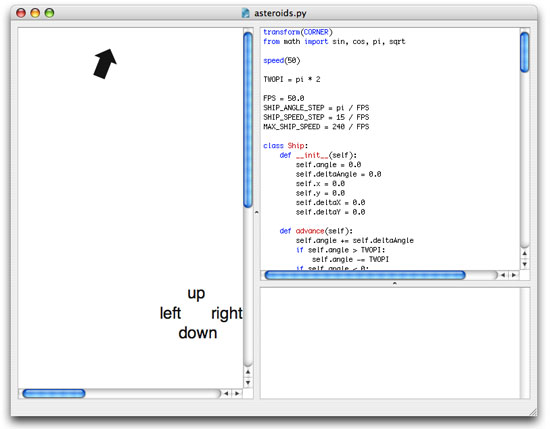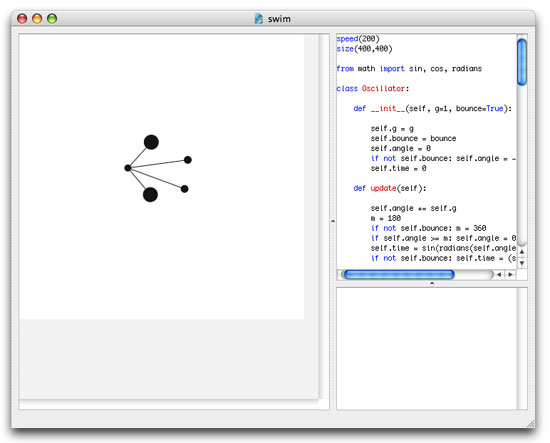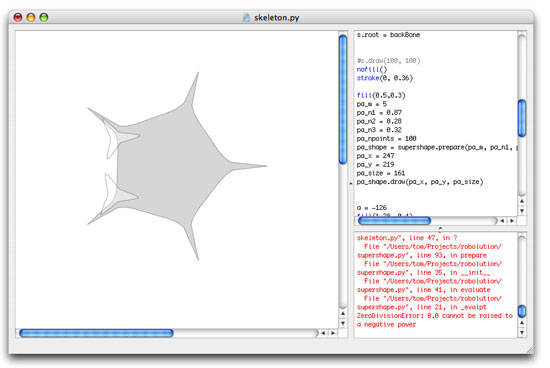Evolution - motion physics
Every body perseveres in its state of being at rest or of moving uniformly straight ahead, except insofar as it is compelled to change its state by forces impressed.
[Cohen & Whitman 1999 translation]
The Evolution project uses a rather poor physics model. All the creatures in the arena soar around like dragons in a frictionless environment. They do not develop new movement strategies based on their behaviour. You could imagine a creature with flarge lippers exhibiting manta ray-like movement, while a creature with extended paddles would swim around.
The environment is vacuum, there is no water or wind for example that hampers motion.
Following below are some test cases for more complex models.
Test case: ice
The test case below simulates a slippery environment and a vessel steered by left and right thrusters. One could imagine the negative effect of the slippery ice on creatures exhibiting wild uncontrolled movement.
Test case: swimming
The test case below simulates swimming behaviour. The swiftness of the creature's motion is dependant on the size and strength of the paddles and the size of the body. Against the slick dragons in the Evolution environment a realistic real-life paddler wouldn't stand a chance.
Test case: skeleton
Right now creatures are made up of fixed components. Here is a skeleton model based on the superformula. Watch how it changes fluidly between different recognizable fishlike shapes. Thought of in three dimensions this could be a nice way to describe a creature's shape.





